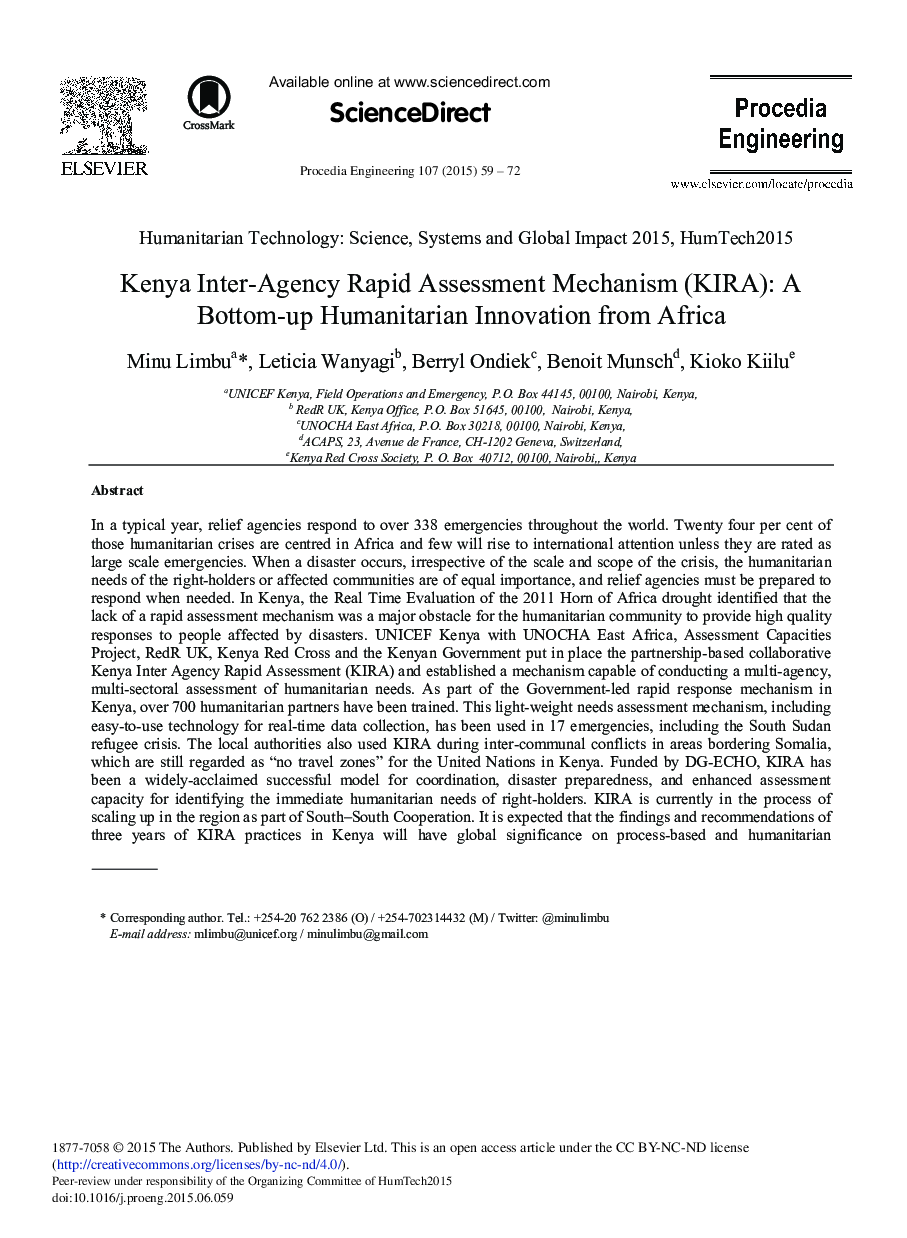| Article ID | Journal | Published Year | Pages | File Type |
|---|---|---|---|---|
| 856706 | Procedia Engineering | 2015 | 14 Pages |
In a typical year, relief agencies respond to over 338 emergencies throughout the world. Twenty four per cent of those humanitarian crises are centred in Africaand few will rise to international attention unless they are rated as large scale emergencies.When a disaster occurs, irrespective of the scale and scope of the crisis, the humanitarian needs of the right-holders or affected communities are of equal importance, and relief agencies must be prepared to respond when needed. In Kenya, the Real Time Evaluation of the 2011 Horn of Africa drought identified that the lack of a rapid assessment mechanism was a major obstacle for the humanitarian community to provide high quality responses to people affected by disasters. UNICEF Kenya with UNOCHA East Africa, Assessment Capacities Project, RedRUK,Kenya Red Cross and the Kenyan Governmentput in place the partnership-based collaborative Kenya Inter Agency Rapid Assessment (KIRA) and established a mechanism capable of conducting a multi-agency,multi-sectoral assessment of humanitarian needs. As part of the Government-led rapid response mechanism in Kenya, over 700 humanitarian partners have been trained. This light-weight needs assessment mechanism, including easy-to-usetechnology for real-time data collection, has been used in 17 emergencies, including theSouth Sudan refugee crisis. The local authorities also used KIRA during inter-communal conflicts in areas bordering Somalia, which are still regarded as “no travel zones” forthe United Nations in Kenya.Funded by DG-ECHO, KIRA has been a widely-acclaimed successful model for coordination, disaster preparedness, and enhanced assessment capacity for identifying the immediate humanitarian needs of right-holders. KIRA is currently in the process of scaling up in the region as part of South–South Cooperation. It is expected that the findings and recommendations of three years of KIRA practices in Kenya will have global significance on process-based and humanitarian technology-driven humanitarian action.
